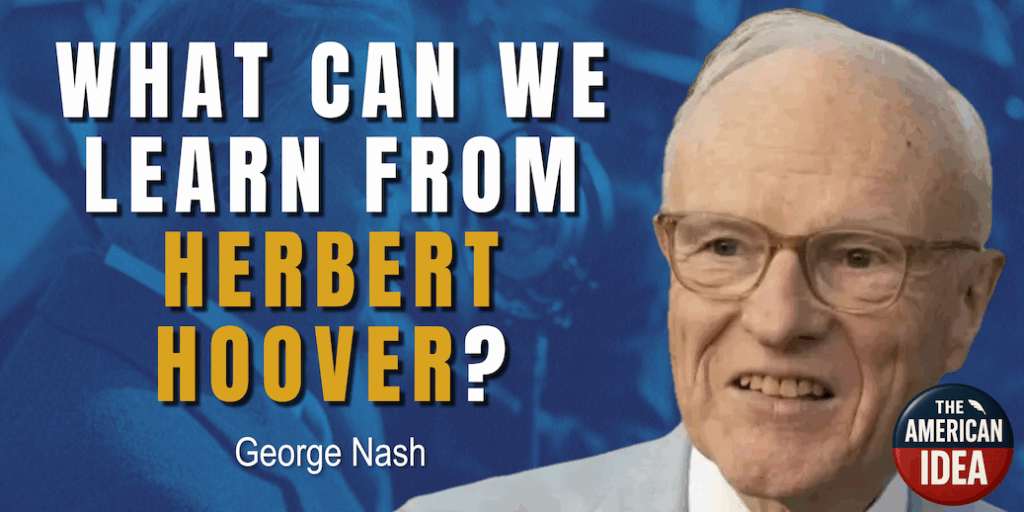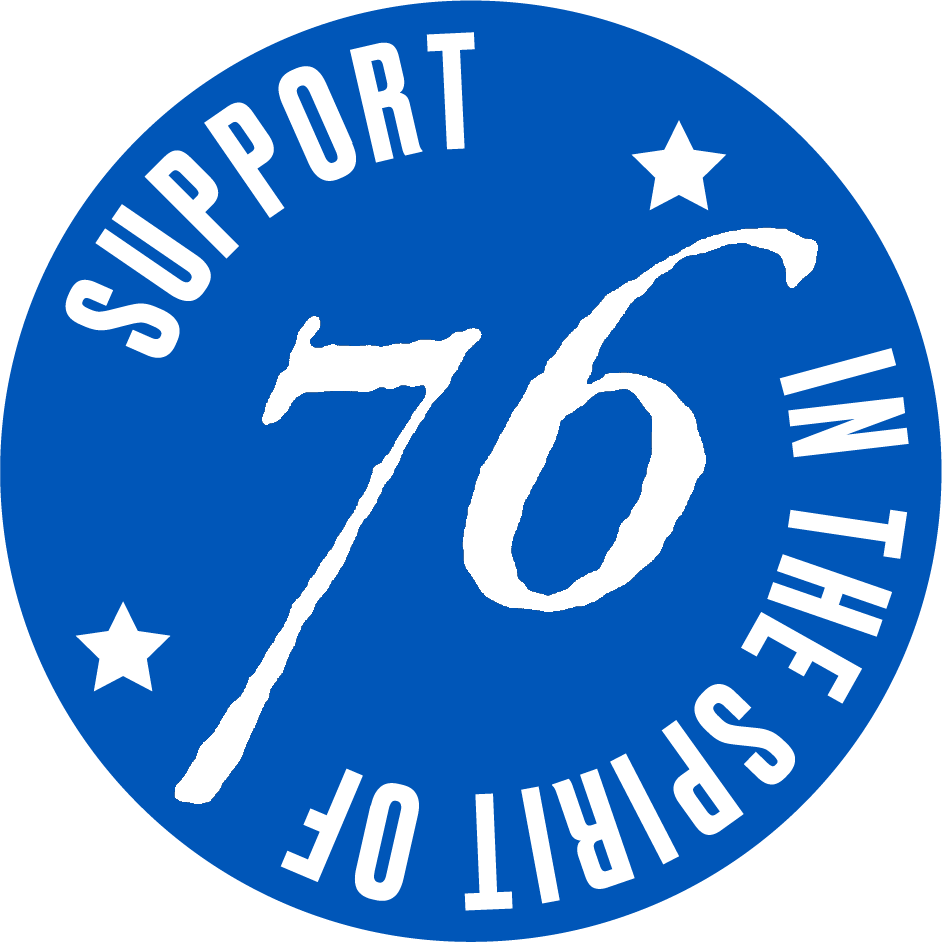What Can We Learn from Herbert Hoover?
October 15, 2025

Join The American Idea’s Listener Email list – get news about upcoming episodes and a chance to offer questions for them, too!
When most Americans think of Herbert Hoover, they conjure the image of a failed president overwhelmed by the Great Depression, a man whose name became synonymous with economic disaster and government inaction. This caricature, however, obscures one of the most fascinating and complex figures in twentieth-century American history. According to historian George Nash, perhaps the world’s foremost Hoover scholar, our collective memory has reduced a remarkable fifty-year career in public service to just four tumultuous years in the White House, missing entirely the humanitarian hero, innovative administrator, and thoughtful political philosopher who shaped American policy for decades.
The conversation between Nash and Jeff Sikkenga on the Ashbrook Center’s “American Idea” podcast reveals a Herbert Hoover who defies easy categorization, a man whose life story reads more like an adventure novel than a conventional political biography. Far from being the rigid conservative of popular imagination, Hoover emerged as a progressive Republican whose ideas about the proper relationship between government and society anticipated many contemporary debates about federalism, voluntary associations, and the limits of state power.
From Orphan to International Hero
Hoover’s extraordinary journey began in the humblest circumstances imaginable. Born to Quaker parents in the tiny Iowa village of West Branch in 1874, he was orphaned before his tenth birthday and eventually sent to live with an uncle in Oregon. His admission to Stanford University’s pioneering first class launched him into a career as a mining engineer that would take him literally around the world several times before he turned forty.
It was this global experience that positioned Hoover for his first great act of public service. When World War I erupted in 1914, approximately 100,000 American tourists found themselves stranded across Europe, caught in the chaos of mobilizing armies and paralyzed transportation systems. Hoover, then a London resident, organized what he later called his first step onto “the slippery slope of public life” — a massive relief effort to get his fellow Americans safely home.
But this was merely a rehearsal for the role that would make him an international celebrity. Hoover’s organization of food relief for the entire civilian population of German-occupied Belgium transformed him into what Nash describes as a genuine humanitarian superhero. The operation expanded dramatically after America entered the war, with Hoover serving as Woodrow Wilson’s head of the U.S. Food Administration, and then extending relief efforts to more than a dozen countries after the armistice. Nash argues that when you tally the millions of lives saved through Hoover’s various relief operations — including Soviet Russia in the early 1920s, despite the communist regime — he may have been “responsible for saving more lives than any person who had ever lived.”
The Philosophy of American Individualism
This humanitarian experience profoundly shaped Hoover’s political philosophy, which he articulated most clearly in his 1922 book “American Individualism.” Having witnessed Europe’s descent into socialism, communism, fascism, and general chaos, Hoover sought what he called a middle path between the extremes of laissez-faire capitalism and statist control. His concept of “American Individualism” centered on Abraham Lincoln’s ideal of equality of opportunity — ensuring everyone had a fair chance without government dictating outcomes.
Hoover’s political evolution proved as unconventional as his career path. In 1920, he simultaneously attracted support from both major parties, actually winning Democratic primaries in New Hampshire and Michigan while being courted for the Republican nomination. Franklin Roosevelt himself wrote to a friend that year expressing his wish that “we could make Hoover president of the United States.” The irony is striking: the man who would later defeat Hoover once considered him ideal presidential material, even suggesting a dream ticket of “Hoover of California as president and Franklin Roosevelt of New York as his running mate.”
As Commerce Secretary under both Harding and Coolidge, Hoover transformed what had been a sleepy federal department into what critics called an “almost ubiquitous dynamo.” He championed standardization of products, development of civil aviation, and improvement of statistical data collection — believing that better information would help businesses plan more effectively and smooth out the boom-and-bust cycles that plagued the economy. His approach emphasized government as an “umpire” that could set rules and provide coordination without choosing favorites or controlling outcomes.
The Depression Challenge and Its Aftermath
When the stock market crashed in October 1929, Hoover initially believed the fundamentals of the economy remained sound and that the crisis represented primarily a psychological blow. However, he quickly recognized the need for unprecedented presidential leadership, convening conferences with business and labor leaders to secure promises against wage cuts and strikes while accelerating federal construction projects.
Nash paints Hoover’s depression-era presidency as a series of external shocks that repeatedly undermined recovery efforts, comparing him to Sisyphus eternally pushing a boulder uphill only to watch it roll back down. The great drought of 1930 devastated agricultural income, European banking crises threatened American financial institutions, and Britain’s abandonment of the gold standard triggered a run on American banks that forced hundreds to close within weeks.
These crises pushed Hoover reluctantly toward greater federal intervention, culminating in the creation of the Reconstruction Finance Corporation and the Emergency Relief and Construction Act of 1932, which provided the first federal aid to states for unemployment relief. Yet even as circumstances forced him to expand government’s role, Hoover maintained his opposition to direct federal payments to individuals, arguing this would create both spiritual corruption and political corruption through machine politics.
The Crusader’s Long Campaign
Hoover’s defeat by Roosevelt in 1932 marked not the end of his public career but its transformation into what he called a “crusade against collectivism.” For thirty-one years — longer than any ex-president until Jimmy Carter — Hoover waged an intellectual battle against what he saw as the New Deal’s fundamental wrong turn toward statism. His 1934 book “The Challenge to Liberty” articulated his vision of “historic liberalism” as an alternative to both pure laissez-faire economics and creeping socialism.
Perhaps most significantly, Hoover recognized the ideological stakes of his conflict with Roosevelt. In his final 1932 campaign speech at Madison Square Garden, he declared the election “more than a contest between two men” or “two parties” but rather “a contest between two philosophies of government” whose outcome would “determine the fate of the country for a century to come.” He later called this one of his most prophetic statements.
The full measure of Hoover’s significance becomes clear only when we consider his complete career rather than fixating on his presidency. His vision of limited government, voluntary associations, and equality of opportunity continues to resonate in contemporary political debates, while his humanitarian achievements remind us that public service can take many forms beyond electoral politics. Understanding Herbert Hoover in his full complexity offers insights not only into a remarkable individual but into the enduring tensions between individual liberty and collective action that continue to define American political life.

